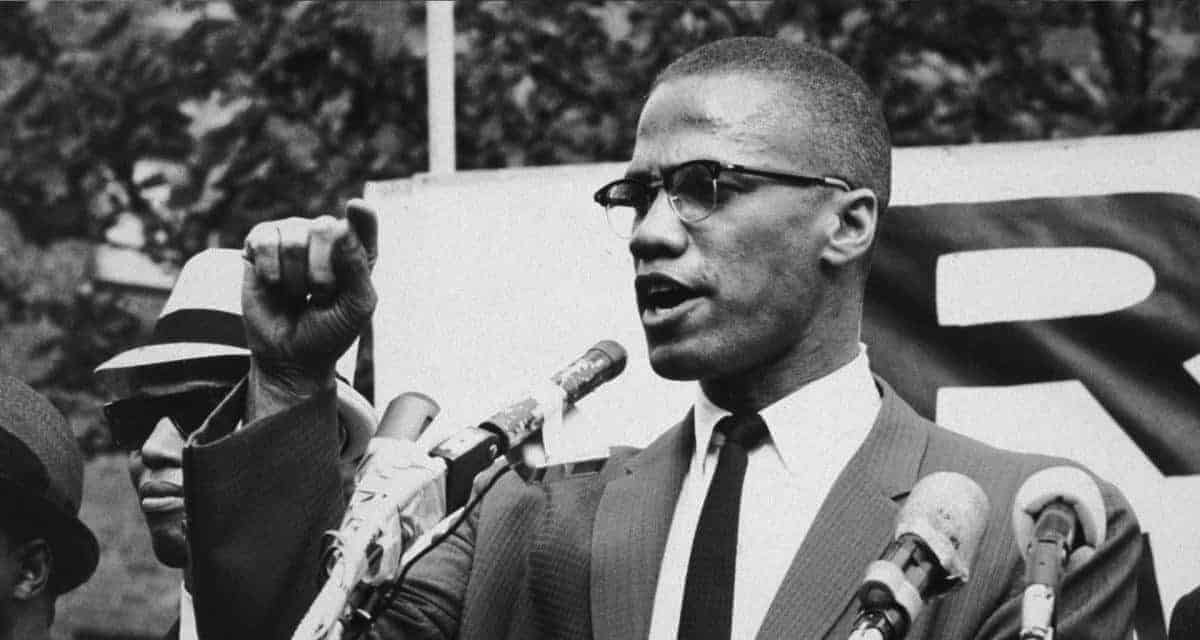Malcolm Little remains a divisive figure in American history. Known to the world as Malcolm X, his followers claim he was an advocate for the rights of African-Americans. His detractors suggest he was a thug who preached violence, hate, and segregation. Regardless of how you view him, there is no doubt that Malcolm X is one of the most influential African-Americans of all time. Even today, over 50 years after his death, Malcolm X’s career and motivations are the subjects of fierce debate.
He initially became one of the Nation of Islam’s (NOI) most vocal leaders and helped promote black supremacy. Eventually however, he became disillusioned with the NOI, left the organization, and denounced racism. Unfortunately, he didn’t get much of an opportunity to walk down a new path because on February 21, 1965, less than a year after repudiating the NOI, the group took the ultimate revenge as three of its gunmen murdered Malcolm X in Manhattan. As famous as Malcolm X is, not everything about his life is common knowledge so in this article, I look at 10 interesting facts about the former NOI member that you may not be aware of.

1 – His Father Was Possibly Murdered by the KKK
Malcolm Little was born in Omaha, Nebraska in 1925. His mother Louise and father Earl were admirers of Marcus Garvey, the Pan-African activist. Earl was also a Baptist lay speaker who bravely spoke out against racism. Malcolm’s parents also instilled a sense of black pride and self-reliance in their children. Malcolm was the middle child of seven and before he was even born, his father was the subject of KKK threats. It was an era when the Klan’s popularity was rapidly expanding and in 1925, the Klan came to the Little household and threatened the family.
The Littles were forced to flee from the Klan and moved first to Milwaukee and then to Lansing in Michigan. If they thought they were safe from white supremacist violence, they were sadly mistaken because in 1929, a white racist group called the Black Legion burned down the Little home in Lansing. The vigilante terrorist group had been formed by William Shepard in Ohio in the 1920s and a chapter was formed in Michigan (Highland Park) in 1931. An estimated one-third of the group was from Detroit which was a known KKK hotbed at the time.
Tragedy hit the Little family in 1931 when Earl died. The official story said that he had been hit by a streetcar in a terrible accident. However, his family believed that the Black Legion murdered Earl and laid his body on the streetcar tracks to be run over. Earlier that day, Louise had a dream about the death of Earl and later described it to Malcolm. He believes that his mother’s capacity for premonition was passed on to other family members and in his autobiography, he mentions details of his own premonitions in later life.
It was impossible for the Littles to prove the involvement of the Black Legion so if Earl was murdered, the racist group got away with it. Louise had a nervous breakdown and was placed in an institution when Malcolm was just 13-years old. These negative encounters with whites filled the young man with a burning rage. He also claimed that an uncle of his was lynched by white supremacists. The family even had problems with the insurance company in the wake of Earl’s death as one provider claimed he committed suicide and refused to pay. Malcolm’s life was to become a whole lot harder after his mother was sent to Kalamazoo State Hospital.

